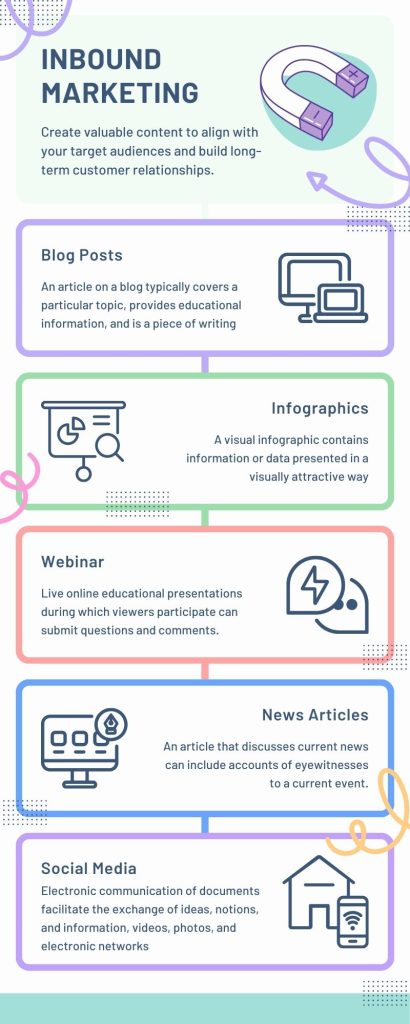Inbound Marketing vs Content Marketing: 7 Incredible Techniques
Reach the Top of Search Results with Amazing SEO Digital.
CONTENT MARKETING
Discover 7 powerful techniques for your business goals!


Introduction
Hey there, fellow marketers! Ever felt like you were tiptoeing along the edges of a vast marketing ocean, wondering which direction to plunge in? You’re not alone.
The marketing landscape is a dynamic, ever-evolving cosmos packed with strategies that sound eerily similar yet are as different as chalk and cheese. Content marketing and inbound marketing are two such strategies that often get mixed up in the whirlpool of marketing jargon.
Trust me; I’ve been there, scratching my head, asking myself the same question – inbound marketing vs content marketing, what’s the big deal?
Why is this comparison significant for us marketers, content creators, and business owners? Well, buckle up, my friend! I’m about to embark on a journey to demystify these strategies, highlighting their unique characteristics and how they can work together.
By the end, you’ll understand the difference and be equipped with a toolkit of seven incredible techniques to boost your marketing campaign efforts.
Understanding Content Marketing
Let’s rewind a little. Picture this – it’s the 19th century, and John Deere published “The Furrow,” an agricultural magazine. Little did they know, they were pioneering what we now know as content marketing. Fast forward to today, the Content Marketing Institute defines content marketing as a strategic marketing approach focused on creating and distributing valuable, relevant, and consistent content to attract and retain a clearly defined audience — and, ultimately, to drive profitable customer action.
At its core, content marketing is about storytelling. It’s about crafting a narrative that resonates with your audience, sparking interest, and nurturing relationships. It involves creating and sharing high-quality content assets like blog posts, videos, social media posts, e-books, and more, to educate, inform, and entertain your audience. In essence, content marketing is about being a trusted source of information, not a salesperson.
A successful content marketing strategy involves understanding your audience’s needs and creating relevant content that addresses these needs. It’s about crafting valuable content that positions your brand as an authority in your field, driving customer engagement, and fostering brand loyalty.
From the pioneers publishing their first magazine to modern marketers mastering the art of digital marketing, content marketing has come a long way. But remember, it’s not a sprint; it’s a marathon. It’s a long-term commitment that requires consistency, creativity, and, most importantly, a deep understanding of your audience.
Understanding Inbound Marketing
Imagine you’re at a party, and instead of shoving your way into a group conversation, you strike up a tune on the piano in the corner. Before you know it, people are naturally drawn to you, intrigued by the melody. That, my friend, is the essence of inbound marketing.
Coined by HubSpot in 2006, inbound marketing is a marketing approach that attracts customers by creating valuable content and experiences tailored to them. It’s like laying out breadcrumbs of valuable content that lead potential customers to your brand organically. This marketing method revolves around drawing customers in, rather than outwardly pushing a brand, product, or service onto prospects.
The inbound methodology is all about attracting, engaging, and delighting potential customers. It starts with attracting the right audience with relevant content, then engaging them by providing solutions and building relationships, and finally delighting them to ensure a happy, loyal customer base that promotes your brand.
Inbound marketing is a broad umbrella that covers a variety of digital marketing efforts, including content marketing, SEO, social media marketing, and more. It’s a holistic, data-driven approach that involves understanding and meeting the customer where they are.
An effective inbound marketing strategy aligns the marketing and sales team, focusing on creating quality content that pulls people toward your company and product, where they naturally want to be. It’s a customer-centric approach that provides value and builds trust, turning strangers into customers and promoters of your brand.
Inbound Marketing vs Content Marketing: Breaking Down the Differences
Aha! The plot thickens. We’ve explored content marketing and inbound marketing individually, but what happens when we place them side by side? Let’s unravel the inbound marketing vs content marketing conundrum.
At first glance, these two marketing strategies may seem like two peas in a pod, but they have distinct characteristics. Picture this – content marketing is a country, and inbound marketing is the continent it’s part of. Content marketing is a subset of inbound marketing. While inbound marketing encompasses a variety of tactics, such as SEO, social media, and email marketing, content marketing focuses explicitly on creating and sharing valuable publish content.
The primary difference between content marketing and inbound marketing lies in their approach and objectives. Content marketing is a tactic that uses content to establish authority and engage with the audience. In contrast, inbound marketing uses a combination of tactics (including content marketing) to attract, engage, and delight customers.
Content marketing is about creating relevant content and sharing it across multiple channels. It aims to build relationships and establish trust by providing valuable content. On the other hand, inbound marketing is about using content to draw customers in and then engaging with them on a deeper level through personalized interactions.
In terms of audience engagement, content marketing focuses on providing consistent content to attract and engage the audience. In contrast, inbound marketing is about creating personalized experiences and solving problems for the customer.
In terms of business impact, content marketing helps build brand reputation and authority, while inbound marketing aims to generate leads, convert customers, and foster customer loyalty.
In a nutshell, the content marketing vs inbound marketing debate boils down to this – inbound marketing is a broad strategy that includes content marketing as one of its tactics. They’re two sides of the same coin, each with its role in a successful marketing strategy.
7 Incredible Techniques for Content and Inbound Marketing
Now that we’ve untangled the inbound marketing vs content marketing knot let’s dive into seven incredible techniques that blend the best of both worlds.
- Blogging and SEO: Creating a blog filled with valuable, keyword-optimized content is a staple technique. It serves the dual purpose of establishing your authority (content marketing) and drawing organic traffic to your site (inbound marketing). Remember, quality and consistency are key!
- Social Media Engagement: Social media isn’t just for sharing your content; it’s also for starting conversations and building relationships. Engage with your audience, answer their queries, and create a community around your brand.
- Video Content: According to a report by HubSpot, over 54% of consumers want to see more video content from a brand they support. Videos can be a dynamic way to deliver valuable content and capture your audience’s attention.
- Webinars and Podcasts: These are excellent platforms to provide in-depth knowledge on a topic. They can help you position your brand as an industry expert while offering valuable content to your audience.
- Email Marketing: Despite the rise of various marketing tactics, email remains a crucial part of a successful inbound marketing strategy. Use personalized emails to deliver value directly to your customer’s inbox.
- Interactive Content: Quizzes, polls, and surveys are great for driving engagement. They provide value to your audience (they learn something about themselves) and valuable insights to you (you learn more about your audience).
- User-Generated Content: Encourage your customers to share their experiences with your brand. Not only does this provide you with free content, but it also builds trust with your audience as they see real people enjoying your product or service.
Email Marketing: A Key Part of Inbound Marketing Strategy
Ah, email marketing is the unsung hero in the inbound marketing toolbox. It’s an intimate way to deliver valuable content straight to your audience, fostering a one-on-one relationship. It’s about sending the right message to the right person at the right time. It can nurture leads, convert prospects, and turn customers into brand ambassadors when executed correctly. Remember, it’s not about spamming inboxes; it’s about providing value and building trust as part of a larger inbound marketing strategy.
Creating an Inbound Marketing and Content Marketing Strategy
Ready to combine the power of content marketing and inbound marketing? Here’s a step-by-step guide:
- Define your goals: What do you want to achieve? Increase brand awareness? Generate leads? Identify your goals first.
- Understand your audience: Who are you talking to? Create detailed buyer personas to understand their needs, interests, and pain points.
- Craft your message: What value are you offering to your audience? Ensure your content addresses your audience’s needs and aligns with your brand voice.
- Choose your platforms: Where does your audience spend their time? Identify the right channels to distribute your content.
- Create and share your content: Now, it’s time to create valuable content and share it across your chosen channels. Remember, consistency is key!
- Measure and optimize: Use analytics to measure your success, learn from your failures, and optimize your strategy.
Conclusion: How Inbound Marketing and Content Marketing Work Together
Unraveling the inbound marketing vs content marketing mystery has been quite a journey, right? But here’s the crux – while they’re distinct, they’re far from mutually exclusive. Instead, they’re like two peas in a pod, each playing its part in a holistic marketing strategy.
Understanding the difference between inbound marketing and content marketing is crucial, but what’s even more important is realizing how they can work hand in hand. The magic happens when woven together, creating a seamless journey that attracts, engages, and delights your audience. It’s about providing the right content, to the right people, at the right time. It’s about forming relationships, building trust, and turning strangers into loyal customers.
So, in the marketing world, whether you’re a content marketer, a marketing consultant, or a business owner looking to boost your digital marketing efforts, remember – the practice of content marketing and the inbound marketing process are two sides of the same coin. They’re different, but when combined, they can create a potent marketing mix that propels your brand to new heights for content creation.
As we step into the future of modern marketing, let’s not forget – the heart of marketing, whether inbound and content marketing, outbound marketing, or any other kind, remains the same: Creating meaningful content and interactions that resonate with your audience. It’s all about them, after all.
So, let’s put our marketing and sales hats on, embrace the marketing terminology, and embark on content creation content strategies that truly make a difference. Happy marketing, folks!
Frequently Asked Questions
What is the difference between content marketing and inbound marketing?
Great question! While both content marketing and inbound marketing aim to attract and engage an audience, they do it in slightly different ways. Content marketing focuses on creating and distributing valuable content to attract a targeted audience. Inbound marketing uses a combination of marketing techniques, like SEO, blogging, and social media, to draw customers into a brand’s sphere. Essentially, content marketing is a significant component of a broader inbound marketing strategy.
How does digital marketing relate to content marketing and inbound marketing?
Think of digital marketing as an umbrella term. It encompasses all marketing efforts carried out online, including content and inbound marketing. These strategies use different techniques to meet your digital marketing goals – attracting, engaging, and delighting online audiences.
Is content marketing vs inbound marketing a competition?
Not at all! It’s not about content marketing vs inbound marketing; instead, think of them as two parts of a whole. Content marketing creates valuable content, while inbound marketing ensures that content reaches and resonates with the right audience.
How can inbound and content marketing work together?
They’re a dream team! Inbound and content marketing work together by creating valuable content that attracts potential customers (content marketing), using techniques like SEO, email marketing, and social media (inbound marketing) to guide these potential customers through the buyer’s journey.
What’s the role of content in attracting customers online?
Content is king when it comes to marketing online! It’s the hook that draws people in. By providing valuable, relevant content, you can attract potential customers to your brand, engage their interest, and build trust.
Can you give an example of a marketing technique that combines content and inbound marketing?
Absolutely! A blog is an excellent example of a marketing technique that combines both. You use content marketing to create informative and engaging blog posts, then utilize SEO (an inbound marketing technique) to ensure your target audience finds these posts in search engines.
How are inbound marketing strategies different from other strategies?
The key difference is that inbound marketing strategies earn customers’ attention, make the company easy to find online, and draw customers to the website with exciting and helpful content. This contrasts outbound strategies, which are more traditional forms of marketing like TV ads, radio spots, and direct mail, which interrupt potential customers.
Boost Your Online Visibility with Our Expert SEO Services
Improve your Google search rankings and discover new consumers with the aid of our professional staff. Don't pass up your chance for internet success. We can help you get more targeted visitors to your website if you get in touch with us now to find out more about our search engine optimization services.



3 Responses